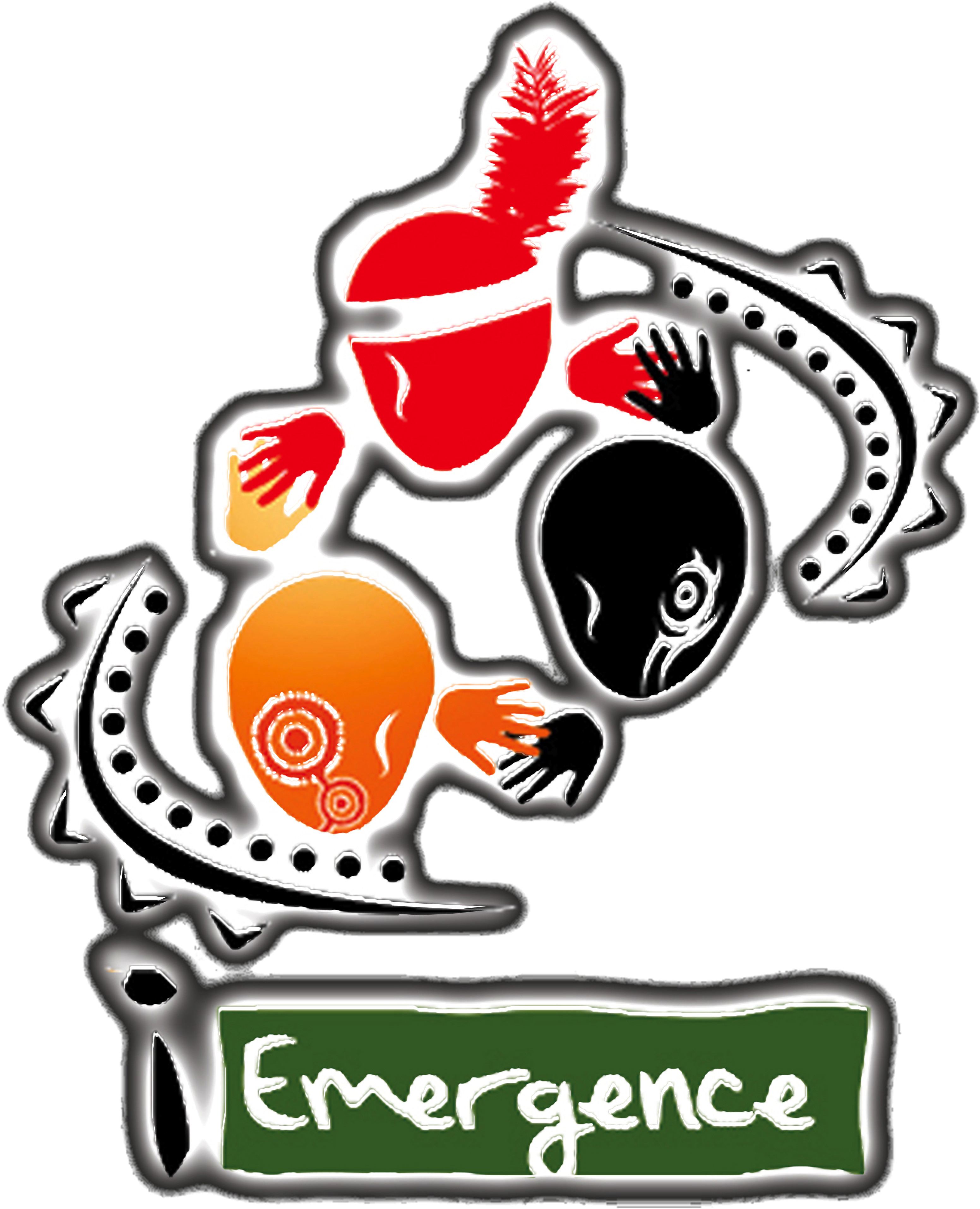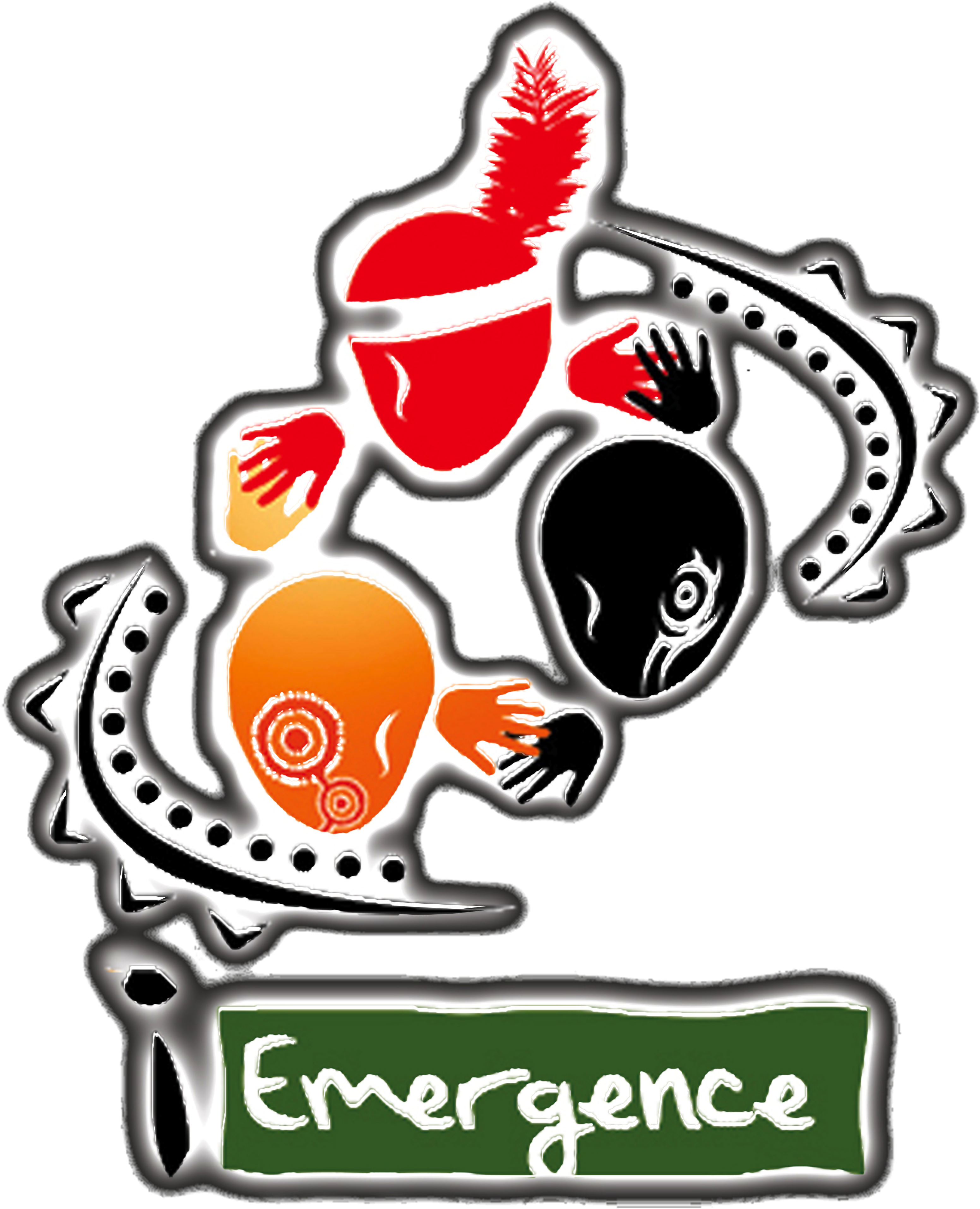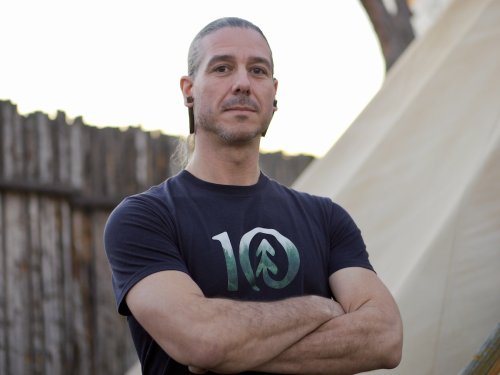Between 1996 and 2011, the World Christian Gathering of Indigenous Peoples brought Indigenous peoples from all over the world together to have conversations about what it meant to be Indigenous and authentic followers of the Jesus Way.
But little did the vision keepers of WCGIP know as they were planning and having conversations about the gathering, their children were having conversations, too.
“We really became this intercultural family — this global Indigenous family of brothers and sisters — and their parents were my parents, and mine were theirs,” said Matt LeBlanc, director of iEmergence.
Among the questions they were asking: What does this mean for us as young people? How do we see things differently than the previous generation? What does being Indigenous look like in a future that's changing — not only recovering and restoring traditions, but also evolving?
In 2007, Matt started thinking about those conversations. They’d talked a lot about what they could do but didn’t have the structure to make any of those things happen. While visiting Larissa Minniecon in Australia, the two decided to launch a global tour to visit their global Indigenous family and ask some very specific, appreciative-based questions about what that might look like. They presented their findings to their peers at the WCGIP the following year in Israel and asked the Elders and vision keepers for their blessing.
From there, Matt and Larissa flew to visit Hannah Chapman in New Zealand. Sitting in the basement of Hannah's parents’ house, they put the pieces together. iEmergence was born.
How did iEmergence begin?
Matt: There were three main directives for iEmergence in the beginning. The first was this idea of gatherings. How do we create spaces similar to the WCGIP that we have been privileged to be a part of, but on a more local scale that gives access to people who could never fly around the world?
The second one was osmosis, which was the word given to this kind of global idea of how knowledge is passed through the generations. It just seemed like it was this unconscious absorption, because you sit in community and you're constantly learning. It has very intentional aspects to it, but it's done in the everyday, and the Elders are teaching the youth and the uncles and the aunties are teaching the young people and they're going through ceremony. So how do we reconnect Indigenous peoples who maybe haven't been involved in their communities back to places where they could learn through osmosis?
It also became a way to say, “How do we invite those who are not us into our spaces to learn from us in our traditional way of understanding education and passing on knowledge?” It’s not only Indigenous peoples relearning their own thing, but also non-Indigenous peoples being invited into spaces in a way that they could sit and listen and learn without being obtrusive or being colonial or being missionaries. It's like, “You are not here to bring anything at this point. We're here to offer you knowledge and wisdom. So come in and sit and listen.”
The other one was first called economic development, because that's what we heard — a lot of, “We need money. We're broke.” But as we continued the work, it became sustainable development. What we were really hearing was, “How do we go back to being a sustainable community in this modern context?” “What does sustainable development look like, economically as well as socially as well as land use?”
And then, a fourth one was added later, and that is training, because everywhere we went, we heard, “We have a bunch of ideas of what we want to do, but we don't have the skill set necessary to do some of those things.” So, as iEmergence, we were like, “OK, well, we need to assist people in accessing proper training and proper skills development for some of the dreams and visions that they have shared with us and they would like our partnership in doing.”
All of this was predicated on the idea of using an asset-based community development methodology. One of the biggest shifts that we need to make in society is how we look at each other and how we appreciate the differences of the other and recognize the similarities as places to build from.
The mission of iEmergence is to enable Indigenous peoples to reclaim and redeem that which was created as good and beautiful in their cultures. Why is that important?
Matt: There’s always been an understanding that the colonizer brings development, brings change in a positive way, brings more knowledge, better ways of doing things. One of the biggest effects that that has had intergenerationally on Indigenous peoples is that we have in many ways and in many places ceased to believe in ourselves, ceased to believe that what we had and what we have been given by Creator as individual, unique cultures and communities was good enough, is good enough, and believed it needed to be changed or adjusted or killed and destroyed so that we could become civilized.
So, one of the first and foremost ways that we understand how we begin transformation is we need to once again believe that none of that is correct. We don't believe that about ourselves. We don't believe that about our people, about our communities, about our culture, about our traditions. And so what does it mean to restore our pride in who we are? What does it mean to — as we say — not just like ourselves, but actually love who we are, who were created as and the knowledge and the wisdom and the place we have to bring that into this world and the necessity of what we have and what we know for this world in the modern day?
That was a lot of the root of our vision and mission — saying, “How do we create spaces where people can feel safe to once again believe in the innate value of themselves, their cultures and their communities, to restore pride and dignity and honour for themselves so that they then have the foundation to be able to grow into vision and to dream and to do things that will take their communities into the future in their own way?” They're in charge of their own development. They're in charge of what's in their future because they know best.
What does this look like practically in the places where iEmergence works?
Matt: The only places where we're doing anything specific as iEmergence currently are the Philippines, U.S. and Canada. Most of what we've done around the world has been through relational networks, where iEmergence isn't there as an organization, but is working alongside a local organization or a local Indigenous community or group that has invited us to come.
In the Philippines, a lot of our initial conversations were really around the development of some traditional educational models. The conversations really wrapped around, "Our young people are leaving the community, moving to the city and having no connection to the community. They don't know who they are, and there's not the structures here in the community to allow them to learn those things. The traditional ways of knowledge passing have been lost because our communities don't live like they used to," because, again, they've been separated and lands have been taken and they don't live in the ways that they used to be able to, to be healthy and whole. And so, how do we get that back? How do we create spaces for young people to re-engage with our traditional knowledge systems, practices, education, ceremony? And so we helped develop what became known as Panuluanan, which in the Atta language means "the learning place." It became once a month, engaging with youth to bring them together with Elders and so forth. And then it morphed into doing that with other communities in the Philippines, where we developed a curriculum. The youth that were entering high school would start this three-year curriculum that would go alongside their high school, where they're learning academics, they're learning traditional knowledge and starting to integrate into more mainstream public education. More recently, in the Philippines, there's been conversations around exploring art as an expression of both identity as well as voice into what's happening in the world around them, and so we're developing, first, an arts collective and, most recently, a theatre collective.
In Saskatchewan, Ji-gaabiikwe Campeau came on board with this vision for what she termed Moccasin Lodge, which is this idea of a space where young women and young men can, in her words, learn how to not just like themselves, but love themselves again and reconnect to tradition and places of safety and learning and healing. And so, she started developing a young women's program, Oskiskwewak, and adopted our Kids Culture Camp that had been running for 18 years into Moccasin Lodge, renaming it Tāpākōmitowin.
Northern Ontario started out as a kid's camp — Mish Adventures. iEmergence was invited to come in and build relationships with the community and take over running the camp, which we hadn’t started but were excited to see continue. Two or three years into the camp, I was invited to come up there and take a look with the understanding that a non-Indigenous person had started it, and they were like, “I'm probably not the right person to be running this.” And so, for the last 12 years, we've been running between three and four weeks of kids camp; which morphed into kids and youth camp; which morphed into kids, youth and family camp; which morphed into kids, youth and family camp and community development, training and facilitation with the community, with Elders, with the chief, the councils and the like. It became this nice relationship with community and the community feeling that we were people that they could trust and rely on to maybe walk alongside some of the dreams and the ideas that they had for their community. That's been a wonderful experience in so many different ways.
We also do quite a lot of facilitation with different groups, organizations, churches, companies — both training in asset-based community development methodologies, as well as facilitating development planning.
In West Papua and Indonesia, there was a lot more conversation around what does nonviolent struggle and protest look like?
In northeastern India, it was wanting to create spaces to invite Indigenous peoples — especially youth and young adults — to express cultural singing, dancing, ceremony and so forth and begin to understand the divides that had been created within their communities as a result of the colonial and missions efforts of outsiders. This became a struggle between community members who had become Christian and those who remain within a traditional spirituality. It was bridging that and creating space for the young people to perhaps live in this middle ground of, actually, we can be both and either, and they're not counterintuitive.
There's been a lot of interreligious dialogue through much of our work, where we're working with traditional peoples, or working with traditional or Indigenous peoples that have Christianized, or Indigenous peoples that have Islam-ized, and finding the cross-sections in there. What does that look like to actually live alongside each other, understanding each other, working together towards things in the midst of some differences, but also a lot of similarities?
How does your work with iEmergence connect with your own spiritual journey?
Matt: I feel extremely privileged that I've been able to spend so much of my life traveling the world and living amongst traditional Elders in hundreds of different cultures,listening to them and learning from them. It has entirely disassembled so many of the common understandings of the teachings I received when I was young, being surrounded by a mainly Christian society and Christian space. It took that and dismantled it. There were definitely some good things that I was taught, and which I still hold onto. There are important and life giving knowledges to be discovered in all of these cultures and traditions. But it's naive and quite destructive to believe that one culture or community has the answers — that your space has all the answers, or even the majority of the answers for everyone else in the world. I feel very privileged to be able to have just sat and listened and learned from so many unique and rich spaces.


